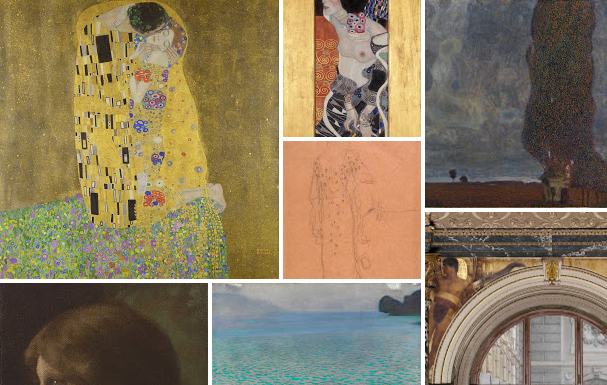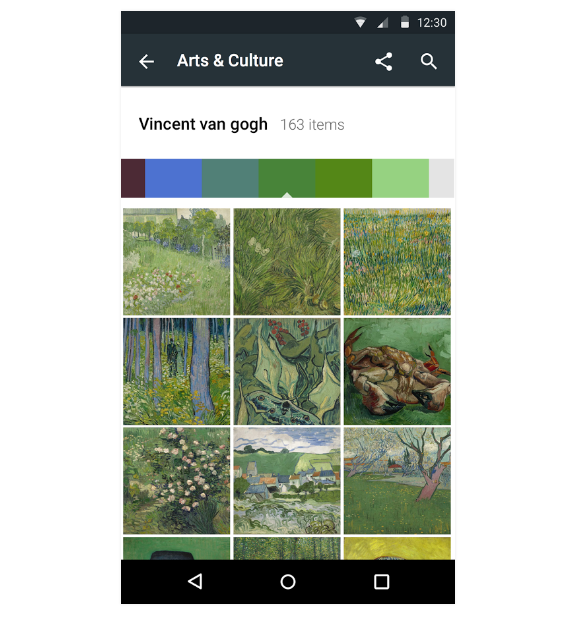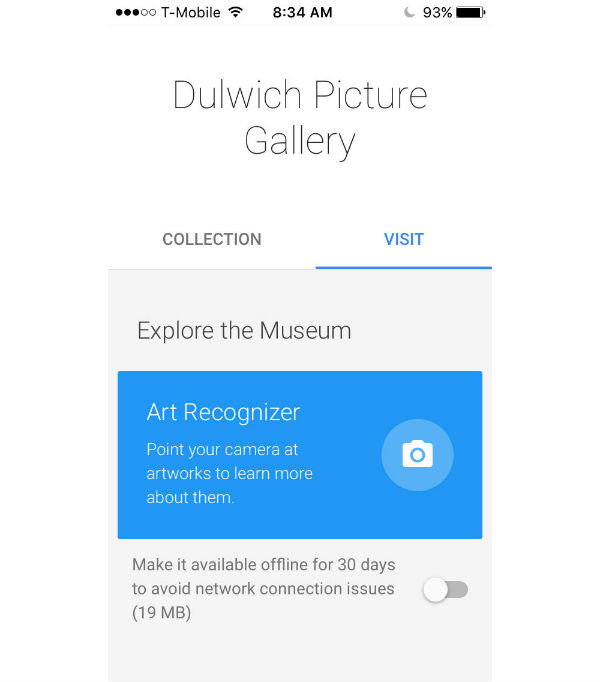Art World
Google’s Sprawling New Art App Has Grand Ambitions But Is Still Pretty Clunky
It feels like a trophy museum that you slowly realize is built by robots.

It feels like a trophy museum that you slowly realize is built by robots.

Ben Davis

In the latest move in Google’s attempt to spellbind the world into submission, the Internet search giant yesterday upped the ante in its art offerings. Specifically, it debuted a spiffy new version of Google Arts & Culture, a website and app that promises to give you access to the world’s museums at a click.
The official Google blog teased the relaunch like this (links are their own from the original):
Just as the world’s precious artworks and monuments need a touch-up to look their best, the home we’ve built to host the world’s cultural treasures online needs a lick of paint every now and then. We’re ready to pull off the dust sheets and introduce the new Google Arts & Culture website and app, by the Google Cultural Institute. The app lets you explore anything from cats in art since 200 BCE to the color red in Abstract Expressionism, and everything in between.
The sprawling new initiative is the latest extension of the Google Art Project, which got quite a bit of buzz back in 2011 when it brought virtual versions of 17 museums, plus zoomable high-res versions of a few superstar paintings, into the easy reach of web browsers everywhere. The Google Arts & Culture site first launched this past year with less fanfare.
Google Arts & Culture now boasts “more than a thousand museums across 70 countries,” from big partners like the British Museum (with close to 9,000 works) and LA’s Getty (a hefty 16,881 items), to the National Museum of Mongolia, in Ulaanbataar (with a modest 96 items to view) or the outdoor “Sculpture by the Sea” exhibit in Cottesloe, Australia (with 69 of its advertised 70 exhibits on view).
The whole thing is pretty fun to play around with, if still a bit clunky. It packs almost too many features together with the seeming grand ambition of becoming the one-stop web portal for art aficionados, and feels a bit like a palatial new trophy museum that you slowly realize was built by robots who aren’t totally sure what anything really means. One minute you are staring in awe at some cool virtual attraction, the next you wander into another digital dead end.
At its most basic and useful, though, it is an art search engine. You can parse the world’s art—or at least the world’s art that Google could get its hands on, which is substantial, but far from comprehensive—via keyword, quickly scanning the archive for, as an example, all the works featuring a “kiss” (which could be the iconic Rodin sculpture or a photo of the band). You can also look for specific “Artists” or “Art Movements.”

Detail of a Google Arts & Culture Search for “kiss.”
Interested in images related to the “War on Terror?” Well, that’s one of the categories discoverable via the “Historical Events” search. Be warned, though—for some dubious reason this gallery features a random mix of Time magazine covers and ancient artifacts from Northern Afghanistan from the LACMA collection.
You can also search by “Medium,” allowing you to see Google Arts & Culture has more than 36,000 “Engravings” on offer, but a mere 25 works in “Beeswax”—the exact same number, in fact, of items whose medium is listed as “Skin.”
Searches are organized in tiled rows, and can be sorted in a number of ways: by the vague metric of “Popularity” (it’s not clear what this means); by “Time,” which yields a nifty timeline view; and lastly by “Color,” a feature destined to thrill interior decorators everywhere looking to pillage art history for inspiration.

Google Arts & Culture app, sorting Van Gogh’s art for “green.”
For the art student cramming for a test, loads of didactic material is available. These range from a really cool slideshow-cum-essay that walks you through the vivid details of Pieter Breugel the Elder’s Tower of Babel, to a rather inexplicable introduction to “Contemporary Art,” which posits that the “tactile ‘information’ of craft media spoke of a direct connection to an endangered humanity,” even as its timeline begins with a 1946 painting by British abstractionist Ben Nicholson. That’s a pretty broad definition of “contemporary.”
There are way, way, way more features to cover. You can, for instance, explore the interiors of hundreds of partner institutions in a museum-themed version of Google Street View. So, if you want to, say, know what it’s like to wander into a slightly distorted virtual version of the gift shop of the Egon Schiele Art Centrum in Český Krumlov, Czech Republic, go nuts.
In its app incarnation, the new initiative also touts (or is an ad for, depending on your POV) integration with Google Cardboard, the web giant’s no-frills, easy-to-use scheme for turning smartphone handsets into VR headsets via a cardboard visor. Google Arts & Culture thereby promises to enable you to “take a virtual tour of the street art scene in Rome; step inside a creation by famous street artist, Insa; or even travel 2,500 years back in time and look around the ancient Greek temple of Zeus.”

The Image Recognizer.
Finally, the least developed—but perhaps most ambitious—feature here is the snappily named Art Recognizer, available at only three partnered institutions: London’s Dulwich Picture Gallery, Sydney’s Art Gallery of New South Wales, and the National Gallery of Art in Washington DC. In essence, Art Recognizer promises to let you point your phone at any picture in a museum, at which point it will recognize the work, and call up all the available information and multimedia material related to it.
Not being in London, Sydney, or DC, I’m unable to say exactly how well Art Recognizer does its art recognizing. I did point it at onscreen versions of various works from these collections, and it seemed to do the trick.
In effect, with its new initiative, Google promises to reinvent the museum wall label for the age of Pokémon GO. Interpret that sentence how you will.